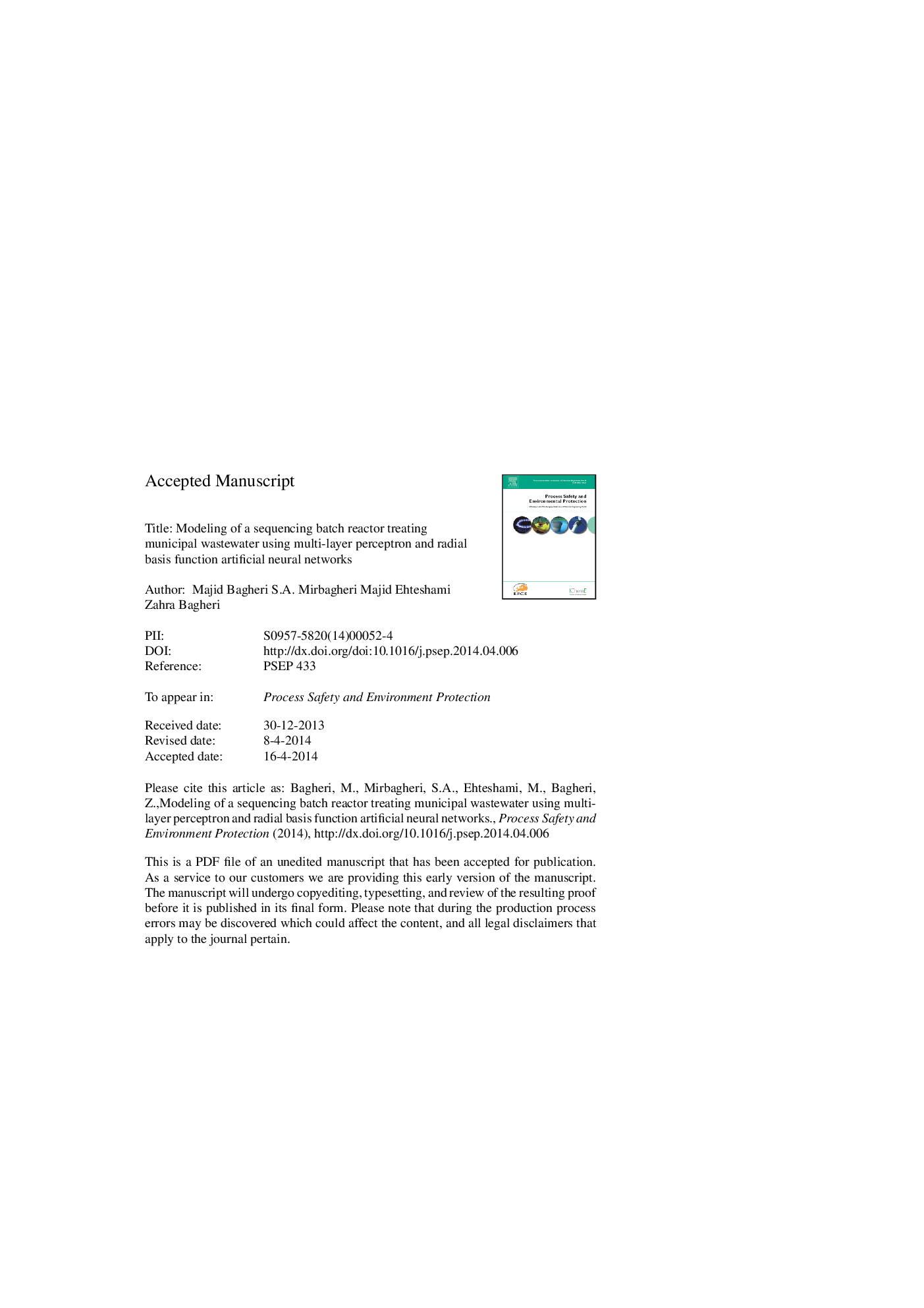| Article ID | Journal | Published Year | Pages | File Type |
|---|---|---|---|---|
| 6974592 | Process Safety and Environmental Protection | 2015 | 37 Pages |
Abstract
A sequencing batch reactor was modeled using multi-layer perceptron and radial basis function artificial neural networks (MLPANN and RBFANN). Then, the effects of influent concentration (IC), filling time (FT), reaction time (RT), aeration intensity (AI), SRT and MLVSS concentration were examined on the effluent concentrations of TSS, TP, COD and NH4+-N. The results showed that the optimal removal efficiencies would be obtained at FT of 1Â h, RT of 6Â h, aeration intensity of 0.88Â m3/min and SRT of 30 days. In addition, COD and TSS removal efficiencies decreased and TP and NH4+-N removal efficiencies did not change significantly with increases of influent concentration. The TSS, TP, COD and NH4+-N removal efficiencies were 86%, 79%, 94% and 93%, respectively. The training procedures of all contaminants were highly collaborated for both RBFANN and MLPANN models. The results of training and testing data sets showed an almost perfect match between the experimental and the simulated effluent of TSS, TP, COD and NH4+-N. The results indicated that with low experimental values of input data to train ANNs the MLPANN models compared to RBFANN models are more precise due to their higher coefficient of determination (R2) and lower root mean squared errors (RMSE) values.
Keywords
Related Topics
Physical Sciences and Engineering
Chemical Engineering
Chemical Health and Safety
Authors
Majid Bagheri, S.A. Mirbagheri, Majid Ehteshami, Zahra Bagheri,
